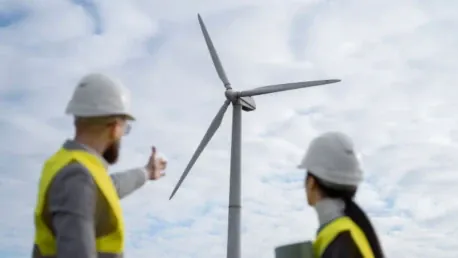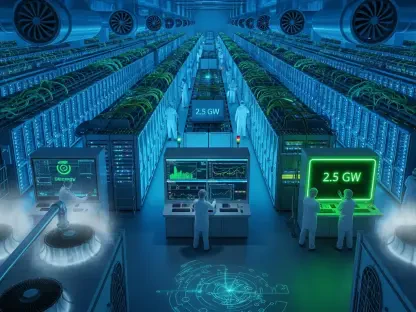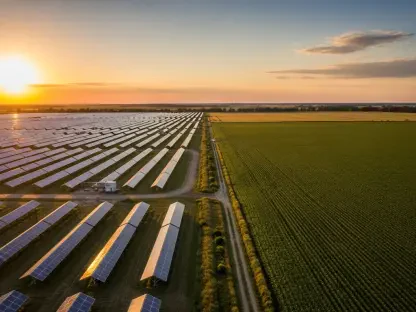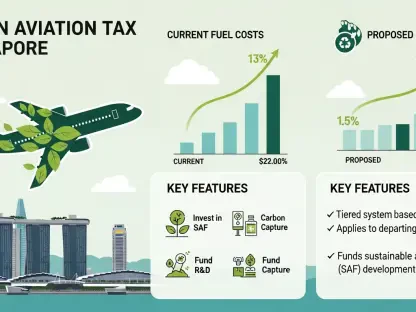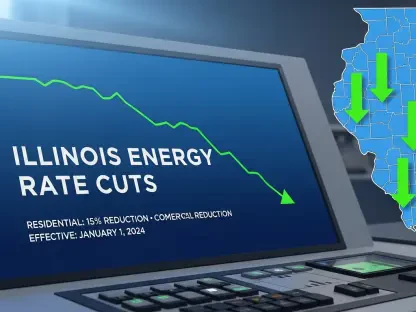The wind turbine industry is rapidly expanding, promising green energy and numerous job opportunities, but it also presents significant risks to workers, much like other sectors of the renewable energy landscape. Ensuring the safety and well-being of wind energy workers is paramount, and it is critical to explore various strategies to enhance safety in this inherently high-risk industry. The installation and maintenance of wind turbines involve challenges such as equipment malfunctions, falls, and electrical hazards, often compounded by long hours and remote locations.
Inherent Risks and Challenges
The inherent dangers of installing and maintaining wind turbines cannot be overstated. Workers like Alfred Pebria, an ironworker in the wind industry, bear firsthand witness to these hazards, recounting situations where equipment failures, such as a crane freezing while hoisting a nacelle, compromise safety. This incident highlights the immediate and real threats workers face, with equipment malfunctions posing significant challenges. Moreover, working at great heights, dealing with unpredictable weather, and often being far from emergency services add layers of complexity to the safety landscape.
Despite these dangers, many workers find the job fulfilling. The adrenaline rush associated with high-altitude work, coupled with the opportunity to travel to various locations and enjoy expansive views, provides a unique appeal. However, the gratification that comes with these perks does not mitigate the serious safety concerns inherent in the job. Addressing these risks is crucial to improving safety standards in the wind turbine industry, necessitating a continuous focus on risk mitigation strategies.
Safety Management
Effective safety management in the wind turbine industry revolves around managing risks as they emerge rather than adhering to a static set of safety protocols. Given the unpredictable nature of this work environment, safety measures must be dynamic and adaptable. Continuous risk assessment processes are key, ensuring that emerging threats are promptly identified and addressed. This fluid approach demands a high level of vigilance and responsiveness from all stakeholders involved.
Union training and protective measures play a pivotal role in enhancing safety management. Union workers benefit from extensive on-the-job learning through apprenticeships, which equips them with practical skills and knowledge essential for navigating the workplace safely. Moreover, unionized workers can flag safety concerns without fearing job loss, fostering a culture where addressing hazards is prioritized. This protective training is often lacking in non-union settings, where workers might not receive the same level of support, rendering them more vulnerable to workplace accidents and injuries.
Unionization and Worker Protections
The role of unionization in bolstering safety standards in the wind turbine industry cannot be overstated. Unionized workers generally enjoy better training, protections, and avenues to collectively address safety concerns, leading to more secure working conditions and effective risk management. Unfortunately, only 12 percent of wind industry workers are currently unionized, highlighting a significant gap that needs to be addressed to enhance overall industry safety. Increasing union representation could profoundly improve working conditions and safety standards for wind energy workers.
Legislative measures like the Inflation Reduction Act (IRA) aim to incentivize safety improvements and unionization rates. By boosting tax credits for projects employing qualified apprentices and paying prevailing wages, the IRA seeks to enhance safety and working standards across the industry. However, the continuity and effectiveness of these measures remain uncertain, particularly considering the potential for administrative changes that could alter or rescind the IRA’s provisions. Ensuring that these incentives remain consistent and impactful is crucial for maintaining and improving safety in the wind turbine sector.
Legislative Influence
Legislative measures hold significant potential to enhance safety in the wind turbine industry by promoting proper training and unionized labor. Policies like the IRA aim to create better working conditions and higher safety standards by providing tangible incentives. However, the sustainability of such improvements is inherently tied to political will and administrative decisions. Consistency in legislative support is vital for maintaining momentum in safety enhancements, as any changes in policy direction can disrupt progress.
The potential impact of administrative shifts, such as those under President-elect Trump that could alter or rescind provisions of the IRA, poses tangible threats to the continuity of safety improvements. Ensuring legislative consistency is crucial for maintaining enhanced safety standards and protecting wind energy workers. Sustained political and administrative commitment to policies that prioritize worker safety will be essential for the industry’s continued progress.
Alternative Safety Advocacy
In the absence of widespread union representation, grassroots organizations like the Green Workers Alliance are stepping in to fill the gap in advocating for stronger safety standards. These groups work tirelessly to organize workers and push for the rigorous enforcement of safety regulations through entities such as the Occupational Safety and Health Administration (OSHA). Grassroots advocacy plays a critical role in addressing safety concerns that may otherwise go unaddressed in non-unionized settings.
The variability in safety enforcement across different companies and the fact that OSHA inspections are relatively rare further complicates the safety landscape for wind energy workers. In this context, grassroots organizations become increasingly vital. They not only highlight gaps in safety enforcement but also rally for more robust protections and support mechanisms for workers. Ensuring continuous advocacy and the implementation of stringent safety standards is essential for creating a safer working environment in the industry.
Worker Experiences and Suggestions
Workers on the ground, like wind technician Patrick Foeday, bring valuable insights into the daily dangers faced in the field. Sharing experiences of falls and heat strokes, Foeday advocates for stricter training requirements and more hands-on training to ensure preparedness. Effective training and preparedness are integral to managing risks and enhancing safety in the wind turbine industry, with a focus on practical, on-the-job training being particularly impactful.
Preliminary survey results from the Green Workers Alliance indicate many workers feel pressured to work beyond safe limits and often have to operate alongside inadequately trained colleagues. Addressing these issues through comprehensive training programs and standardized safety protocols is essential for improving industry safety. Listening to workers’ experiences and incorporating their feedback into policy and training programs can lead to more effective and tailored safety measures.
Growth of the Wind Industry
The rapid expansion of the wind energy sector brings both significant job opportunities and heightened safety concerns. As job growth in the wind industry outpaces traditional energy sectors like coal, ensuring that safety measures keep pace with industry growth is crucial. Protecting workers and maintaining a sustainable, resilient workforce necessitates implementing robust and comprehensive safety protocols that evolve alongside the industry.
As the wind turbine industry continues to grow and evolve, a multifaceted approach to safety management becomes increasingly important. This involves integrating comprehensive training, institutional support through unions, legislative backing, and grassroots advocacy. Addressing these elements cohesively will be essential for building a resilient workforce capable of managing the inherent risks of the job. Emphasizing safety alongside industry growth will ensure that the sector can thrive sustainably and safely.
Conclusion
The wind turbine industry is experiencing rapid growth, promising green energy and numerous job opportunities. However, this booming sector also brings significant risks for workers, similar to other parts of the renewable energy landscape. Ensuring the safety and well-being of those working in wind energy is crucial. It is essential to explore various strategies to enhance safety in this inherently high-risk industry.
Installing and maintaining wind turbines come with challenges, including equipment malfunctions, falls, and electrical hazards. These risks are often amplified by the long hours and remote locations where these turbines are typically located.
Since wind energy is pivotal in moving towards a sustainable future, addressing these safety concerns becomes even more critical. Employers and industry stakeholders need to prioritize creating safer work environments. Implementing rigorous training programs, using advanced safety equipment, and establishing strict safety protocols are some measures that can significantly mitigate risks.
Moreover, regular inspections and maintenance checks can prevent equipment failures. Incorporating technology, such as drones for inspections and remote monitoring systems, can reduce the need for workers to be in hazardous situations. The industry’s continued success hinges on balancing growth with the health and safety of its workforce. Thus, proactive steps are necessary to ensure that wind energy’s promising future doesn’t come at the cost of worker safety.
